Dragon fruit is also known as “Pitaya.” The Dragon is a tropical fruit known for its vibrant red skin and sweet, seed-spotted pulp. Dragon fruit is a tropical fruit that has become very popular recently. Many farmers cultivate Dragon fruit on a large scale due to its taste, medicinal value, and market demand for the fruit. The fruit has a delicately sweet but crisp taste and looks attractive with its green scales and pink skin.
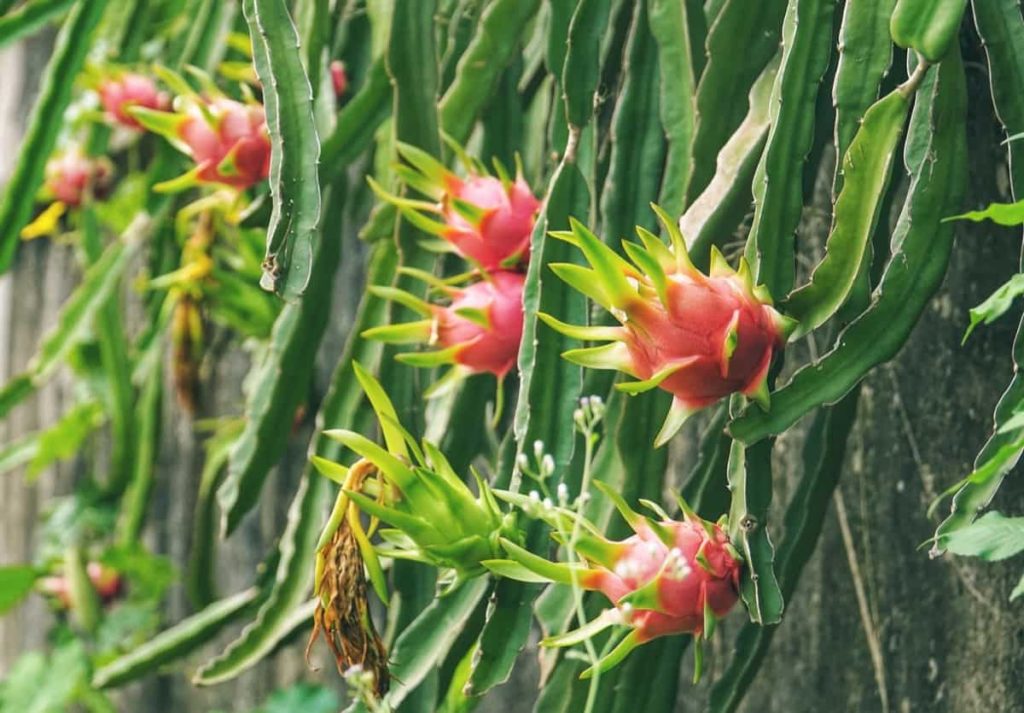
How to grow Dragon fruit from scratch
Is Dragon fruit farming profitable?
- Dragon fruit farming is very profitable. You can earn a net income of 4 lakhs in one acre of Dragon fruit farming.
- Being in the cactus family, this fruit is adapted to grow in arid or semi-arid conditions. It is also not picky about soil type, meaning you can grow it on sandy, loamy or loamy soil. However, for good plant growth and high yields of your plants, the soil should be rich in organic matter and well drained. You should also make sure you water them sparingly during very dry seasons.
What land is required for Dragon fruit?
The Dragon can be grown on almost any soil, but sandy soils with good drainage are generally preferred. Soil pH should be between 5.5 to 6.5 for a good crop. The bed should be at least 40-50 cm high. Dragon fruit plants have relatively short taproots that range from 8 to 12 inches. However, when they begin to flower and fruit, Dragon fruit roots spread up to 24 inches into the soil. Because of this, when filling your Dragon fruit pots with soil, you should use containers at least 2 feet deep. About 20 gallons is recommended for full-sized plants.
Can you grow Dragon fruit from cuttings?
Dragon fruit can be grown either by cuttings or seeds. It’s best to start with cuttings, as they grow and bear fruit faster than plants. The most common method of Dragon fruit propagation is cuttings. Also, you can propagate it by seeds. But the Dragon seeds take a long time and will not continue the characteristics of their mother plant. The seed method is unsuitable if you own a commercial fruit farm. So, if you want the full benefits of Dragon fruit farming, you should use plant cuttings from a quality mother plant.
For field planting, you should use 20 cm cuttings. Moreover, it would help if you piled the cuttings 2 days before Dragon planting. Now you can apply them by using a mixture of dry cow dung. For pit size, you need to dig 60 cm x 60 cm x 60 cm. Also, you need to fill these pits with topsoil and compost, including 100 grams of superphosphate. For 1 acre of land, you can plant about 1700 plants.
In case you missed it: Top 15 Steps to Boost Dragon Fruit Yield: How to Increase Production, Size, and Quality
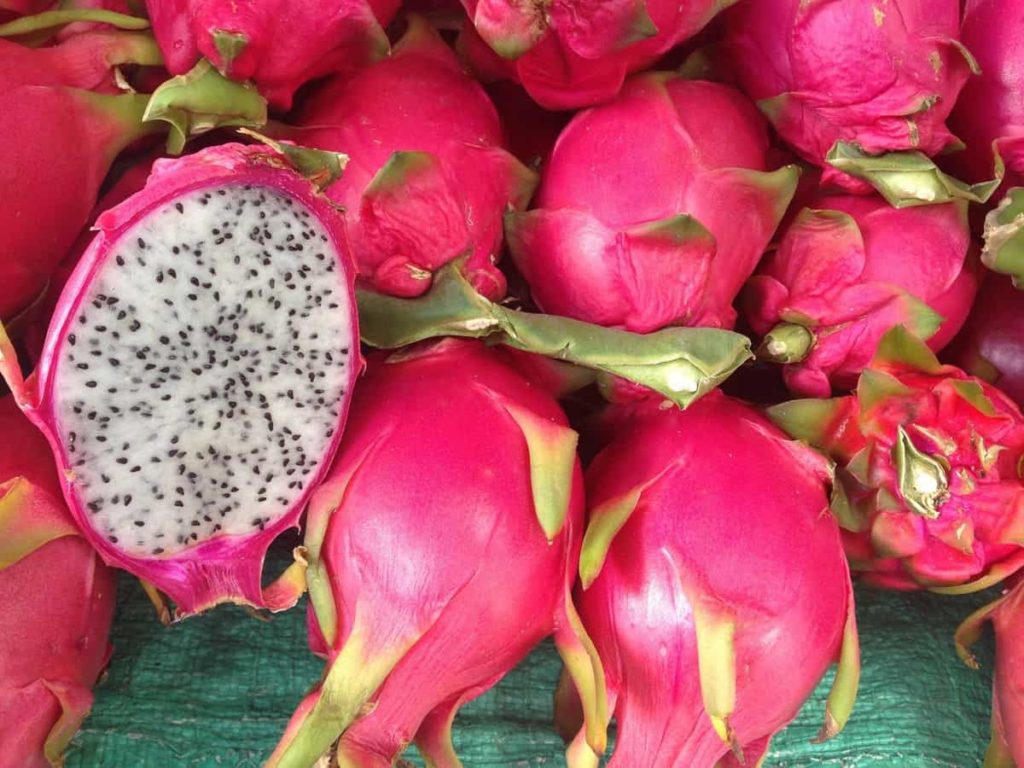
Which month is best for growing Dragon fruit?
- The growing season for the Dragon plant is during the warm summer months. It won’t grow the rest of the year, but when it does, it grows fast.
- Blooms in the Dragon tree will occur from July to October, but they only bloom for one night each year.
- This plant’s growing season is during the hot summer months. It won’t grow the rest of the year, but when it does, it grows fast. Flowers are from July to October, but they only bloom for one night each year.
How to grow Dragon fruit from seed?
To grow Dragon fruit from seeds, cut the Dragon fruit in half and use a spoon to scrape out some of the seeds. Wash the seeds. The pulp will stick to the seeds, and it’s fine to stick to them. Fill a cup or small pot with sterile seed starter or cactus soil mix. An easy way to grow your Dragon fruit cactus is to purchase Dragon fruit at the grocery store and plant seeds.
- Prepare the soil bed – Dragon fruit needs full sun, so choose a sunny area in your garden or a sunny windowsill that gets at least six hours of sunlight a day. For soil, choose soil that is well-drained (Dragon fruits are sensitive to “wet feet” or constantly wet roots) and rich in organic matter. Don’t use cactus soil — like tropical plants, Dragon fruits like more water than other cacti and want something that slightly improves humidity.
- Prepare the seeds – Cut a ripe Dragon fruit in half and scoop out the black seeds. Wash the flesh and pulp from the seeds and place the seeds on a damp paper towel for at least twelve hours.
- Plant the seeds – Sprinkle Dragon fruit seeds on the surface of the soil and cover them with a thin layer of soil.
- Water or mist the soil bed regularly, keeping it evenly moist. If your soil starts to dry out, cover the soil bed with plastic wrap to trap moisture until the seeds germinate.
- Thinning and transplant – As your Dragon fruit plants grow, thin them out to give each new plant room. If you grow them indoors, transplant them into larger pots.
- Support – Once you’re Dragon fruit plant is twelve inches tall, it will need a support system to keep growing—after all, Dragon fruit is climbing cacti. Set up a trellis or wooden stake to support your plant.
Is Dragon fruit a good investment?
- Fertigation cost for Dragon fruit is very low and will not exceed 50,000 per year.
- The average investment for the first year is Rs. 5-6 lakh. After the second year, the total expenditure will not exceed Rs. 1 lakh per annum.
What is the yield per acre of Dragon fruit?
- Yield is a very important factor in Dragons and depends on cultivation practices, variety of fruit, soil type, and climate.
- Each Dragon fruit weighs about 200 to 700 grams, depending on management practices. Economic fruit production begins after three years in well-managed orchards, and the average yield can be Rs. 4 lakhs per acre.
Is Dragon fruit farming a good business?
- Dragon fruit farming is a profitable enterprise and a promising source of income for farmers.
- The ever-increasing land area for Dragon fruit indicates its great potential as a commercial crop.
How do you treat Dragon fruit disease?
But the best way to control disease in Dragon fruit is to follow good hygiene practices. That is, disinfect tools, remove and dispose of infected plant debris, keep plants healthy, water and fertilize, and keep the surrounding area free of weeds and pests that may spread the disease.
Most diseases are spread by unsanitary gardening practices, especially unsanitary tools. It’s important to sterilize your tools between uses, so you don’t spread disease. Tools can be disinfected with alcohol, hydrogen peroxide, or a weak water solution. Some diseases are spread by contact between an infected plant and an uninfected plant, so it’s a good idea to give some space between plantings.
In case you missed it: Earning 12 Lakh from Dragon Fruit Cultivation: A Success Story of a Farmer in India
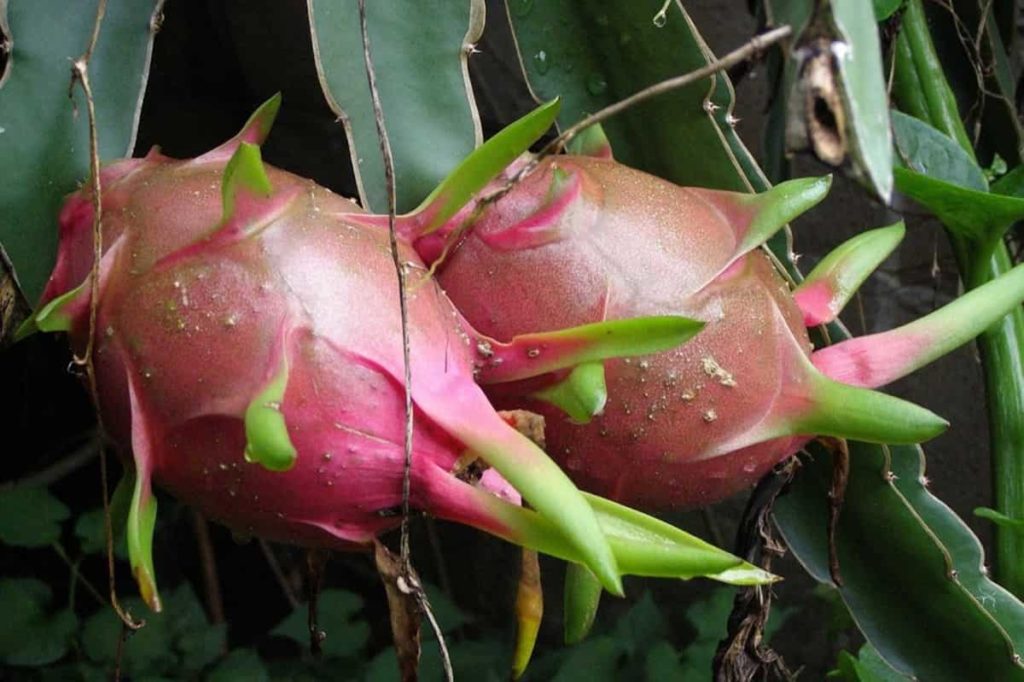
Why do Dragon fruit leaves turn yellow color?
- Dragon leaves can turn yellow as an indicator of stress due to environmental factors, which need to be identified as soon as possible.
- The common causes of yellowing leaves are too much sun, stem rot, overwatering, disease, and insects.
- Symptoms of Dragon fruit plants with stem rot include disease susceptibility, small fruit, stunted growth, easy sunburn, and low drought tolerance. Fungi usually cause stem rot and are found in tropical countries because they thrive in heat and humidity. The spores may be already present in a healthy plant, where they have been transferred by contaminated equipment or insects. The best method to prevent stem rot is to prevent any chance of infection from occurring in the first place.
- Make sure your plant is well nourished and healthy. When the Dragon fruit plant is overwatered, it can cause root rot. As a result, your plant’s roots turn brown or black and become weak, and the nutrient transport system in the roots becomes inefficient, adding to the potential causes of your Dragon fruit plant turning yellow.
- Don’t overwater your Dragon fruit plant, as this can cause the tiny particles in the green branches of your plant to burst and turn yellow. All that extra water makes the plant more vulnerable to bacteria and fungi.
- The plant roots may weaken if you use too much fertilizer on the Dragon plant. For soil to be ideal for your plant, you need well-draining soil, enough fertilizer, and plenty of water.
Why is my Dragon tree losing leaves?
- Overwatering appears when the Dragon loses leaves, but the problem can also be caused by too little water.
- Suppose this is happening by touching the soil at the bottom of the pot. Dragon leaf drops can also be caused by cold wind or extreme heat.
- It is normal for any plant to lose a few leaves. Older plant leaves turn brown or yellow and fall off as they mature, and new leaves grow to replace them. If your Dragon tree occasionally loses some leaves, especially the lower leaves, this is completely normal and probably does not mean anything wrong with the plant. If your Dragon tree suddenly drops several leaves at once, not just the old bottom leaves, it probably means something is wrong.
- Your plant needs some attention to save. The main problem is how much you are watering it. If the leaves are getting wet and limp before they drop, that’s a sign that overwatering is to blame. If the leaves turn brown and brittle before falling, you may be overwatering them.
- While overwatering usually causes more problems, it can die if you neglect your Dragon tree and don’t give it enough water.
How often should I water Dragon fruit?
Under normal conditions, the Dragon fruit cactus should be watered once every two weeks. You can check the soil with your finger or use a moisture meter to check how moist the soil is. The soil should feel dry or moist but never hard or swampy. Dragon fruit is a cactus that requires very less water than other crops/fruits.
In case you missed it: Organic Dragon Fruit Farming – Cultivation, Business Plan
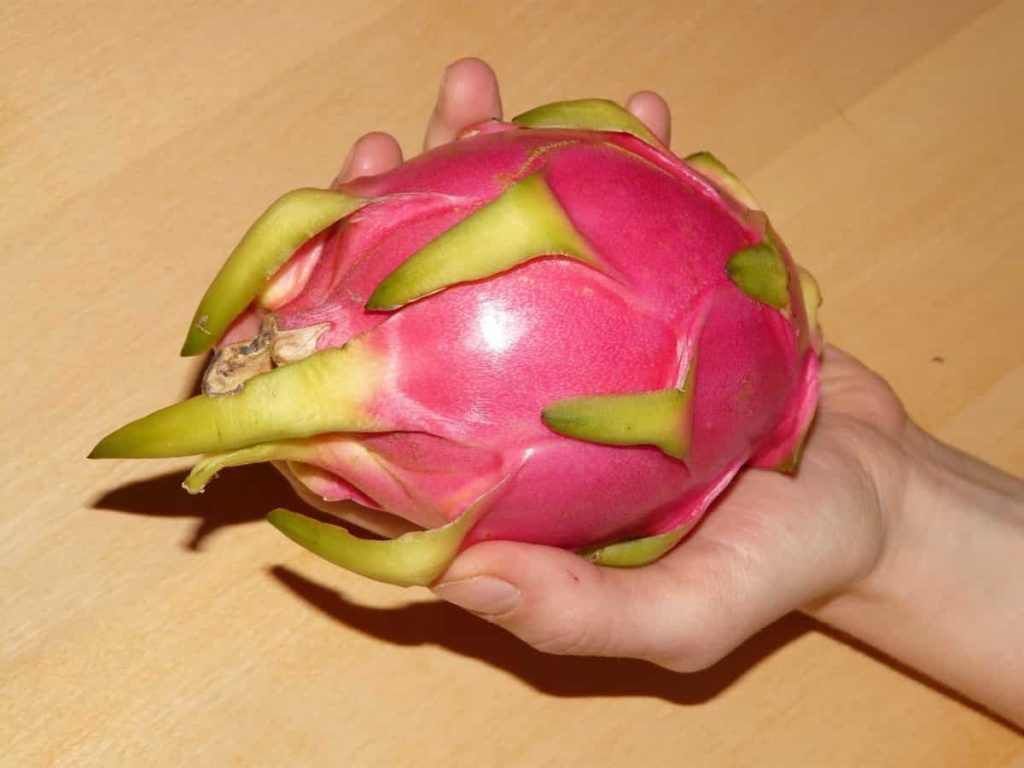
It can survive for months without water. The best-recommended method of irrigation is drip irrigation. Flood irrigation is not recommended because it wastes water and increases weed activity. About 1 to 2 liters of water per Dragon plant per day is sufficient during hot/dry days. Water requirements may increase or decrease depending on the soil, climate, and plant health.
How many Dragon fruits does a tree produce?
- Dragon fruit usually fruits 18-24 months after planting.
- It is a vegetative fruiting plant that usually bears fruit during or after the monsoons. It bears fruit in 3 to 4 waves in a season.
- Each pole produces about 40 to 100 fruits per wave.
Can we grow Dragon fruit at home?
- A great source of vitamins C and B, Dragon fruit requires very little water and grows best in places with warm temperatures. It makes an ideal fruit to grow in different parts of India.
- Various farmers across the country are cultivating this exotic fruit, and the best part is that you can do it right at home.
How do I keep my Dragon tree alive?
- Water the plant once a week or less, allowing the soil to dry out between watering. Please don’t neglect to water it, but remember that a Dragon tree can do better underwater than overwatering.
- Place your Dragon tree in a location that receives bright, indirect light. Dragon trees do not like to be in direct sunlight. Please choose an appropriate pot size for the plant and ensure it has enough drainage holes. Use a well-draining potting mix. Fertilize the plant only a few times a year, being careful not to over-fertilize when feeding.
When should I prune Dragon fruit?
- If you’re starting with Dragon fruit, remember that they shouldn’t be pruned until they’re at least a year old, and ideally not until they have a good flowering and fruiting season.
- Cut back any dead, dying, diseased, or overcrowded branches to keep your plant disease-free and growing properly on its support system.
What is the best type of Dragon fruit?
Yellow Dragon fruit (Hylocerus megalanthus), also known as yellow pitahaya, is the sweetest Dragon fruit. It is part of the cactus family – and is by far the most popular cactus in the world. Yellow Pitaya is smaller than the red-skinned species but sweeter and juicier.
How do I get Dragon fruit to produce more fruit?
- To encourage fruiting in the Dragon plant, you should give your cactus a tall, sturdy trellis to climb. And always remove damaged or dying branches.
- Prune the topmost branch tips to encourage more lateral growth and fruit development.
Do Dragon fruit need to be pollinated?
- Depending on the plant variety, they can be either self-pollinating, self-fertile, or self-sterile. If your Dragon variety is self-pollinating, the stigma will be minimal and close to the anthers, so hand pollination is unnecessary. However, it may increase fruit set and size.
- Dragon plants rely on nocturnal pollinators such as insects and bats to help produce fruit. If you’re growing Dragon indoors as a houseplant, you’ll need to hand-pollinate the flowers: Run a clean cotton swab or paintbrush through the center of the flower to collect the pollen, then the flower. Blow away the pollen.
- Some varieties of Dragon fruit are self-pollinating, while others need another plant to cross-pollinate them – check which variety you have and whether you need more than one plant to produce fruit.
In case you missed it: Dragon Fruit Farming Profit, Cost, Yield, Project Report
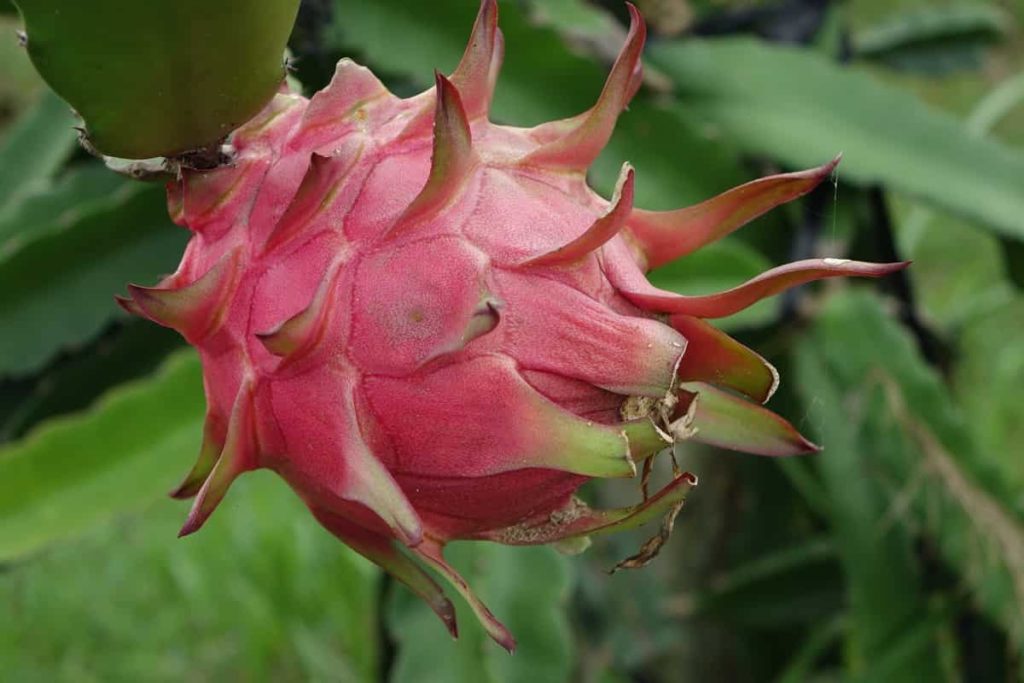
Why does my Dragon fruit flower but not fruit?
There are a few reasons why your pitaya will not bear fruit. The most likely cause is inadequate growing conditions. Dragon fruit cactus is a tropical plant which means it likes heat. Do not overwater during fruit development or flowering.
How do you take care of a Dragon plant?
- Dragon benefits from bright, indirect light. If too much sun is applied, leaf scorch is at risk. It’s a good idea to grow Dragon fruits in a kitchen for humidity.
- Dragon plants prefer to be submerged rather than overwatered, so let the top few centimeters of soil dry out – test with your finger – before watering again.
How often should I fertilize Dragon fruit?
- For Dragon fruit plants four years older, apply three to four inorganic fertilizer applications of 8 to 12 ounces spread evenly over the growing season.
- Apply compost or manure twice, once in the spring and once in the summer, using about 5 pounds each time.
- Organic fertilizer is important in Dragon fruit plants’ good growth and development. You should treat each plant with at least 10 to 15 kg organic fertilizer. After that, you have to add 2 kg of fertilizer every year.
- Along with organic, it also needs inorganic fertilizers for good plant growth. Fertilizer ratio for vegetative stage is Muriate of Potash: Superphosphate: Urea = 40:90:70 grams/plant.
- At the fruiting stage, you need to give high amounts of potash and low amounts of nitrogen. Various fertilizers should be applied from flowering to harvest stages, including urea: and superphosphate: Muriate of potash = 50:50:100 g/plant. This solution can be given before flowering, fruiting, and harvesting. It can increase your Dragon fruit farm productivity.
Why is my Dragon plant dying?
- The most likely causes of a Dragon tree dying are overwatering and insufficient light. Indoors, too much light, fertilizer problems, over-potting, low humidity, pests, or disease can also cause problems.
- Identifying the problem will help you restore your plant’s health. Too much sunlight and overwatering are the most likely problems that affect the Dragon tree. You don’t need to water your Dragon tree more than once a week.
- Dragon trees thrive in bright, indirect light. Other potential problems that can harm your Dragon tree include too little light or water, too much fertilizer, or insects.
Do Dragon plant leaves grow back?
If any Dragon plant leaves are brown or damaged, you can carefully prune them to improve the shape of the plant, and new plant leaves will grow in their place as the plant recovers. As long as the Dragon tree’s trunk and roots are healthy and proper growing conditions are maintained or adjusted; the tree should regrow its lost leaves.
In case you missed it: Frequently Asked Questions About Dragon Fruit Farming
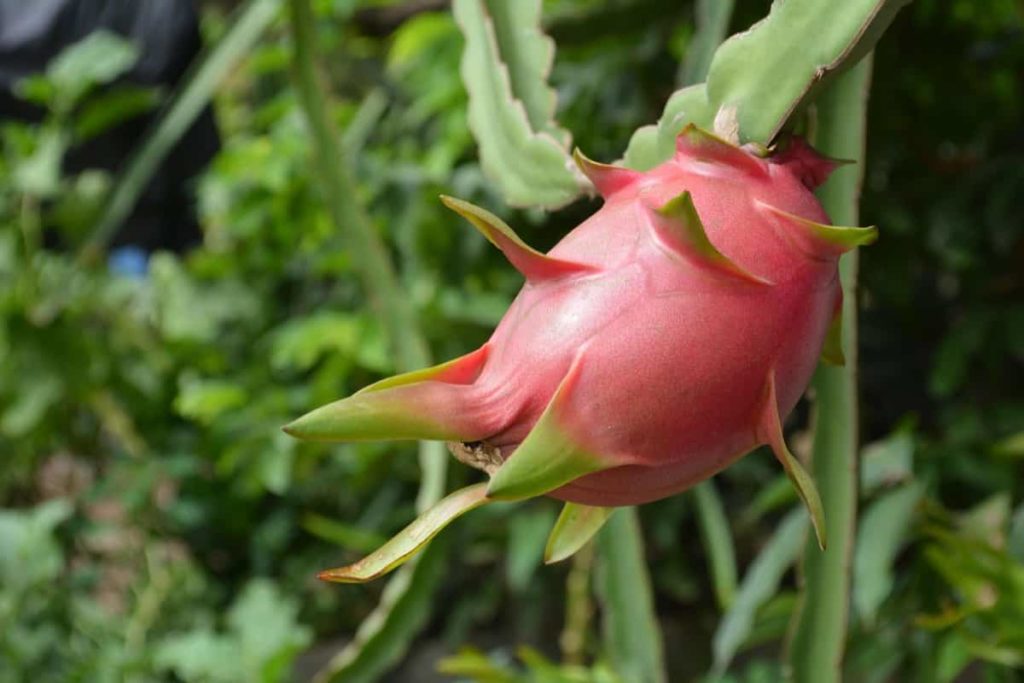
Do Dragon trees need drainage?
- Dragon trees require very little water but need well-drained soil. They grow slowly and require little care.
- The best time to transplant a tree into a new pot is in the spring when it puts out new growth.
Where is Dragon fruit mostly grown?
- Dragon fruit is grown mostly in Karnataka, Kerala, Tamil Nadu, Maharashtra, Gujarat, Odisha, Andhra Pradesh, and Andaman and Nicobar Islands.
- West Bengal is new to the cultivation of this exotic fruit.
How do you protect Dragon fruit from pests?
- Anthracnose, stem canker, and cactus viral disease are the most frequently reported diseases of Dragon fruit. Dragon fruit diseases are managed using cultural, biological, and chemical methods.
- Aphids and mealybugs can be a common problem for Dragon fruit. These are sap-sucking insects that primarily feed on the sweet sap of plants. Aphids also attract ants, which then feed on the plant. Thrips and mites can also be a hindrance. They won’t kill the plant, but they are not good for the overall health of the plant.
- Dragon spots, which appear on plant stems and leaves, can be a sign that your plant has an infection. Bacteria can cause soft stem rot, among other problems. It is a disease that affects the tips of branches. These diseases are usually spread from one plant to another, so disinfect your shears. Sunburn can occur during the hottest time when the sun is very hot, and root rot can occur if the plant is overwatered.
How long can we harvest Dragon fruit?
- A Dragon fruit plant can bear fruit for 20 to 30 years.
- Dragon fruit begins to appear on plants in the first year. It bears fruit from August to December; after one month of flowering, the fruit is ready for harvesting.
- Also, the flowering time continues till December. Picking these fruits can be done up to 6 times in this period. When the Dragon fruits turn red, it is the best time to harvest. The best time to harvest is after 3 to 4 days of color change.
Conclusion
For Dragon fruit farming, farmers must know all the procedures related to Dragon fruit farming, which is reliable for those who want to earn money from Indian Dragon fruit. The high profitability and low maintenance of Dragon fruit farming have attracted the growing community across India. The above information helps to get more yield in Dragon farming.
- Economical Aquaculture: A Guide to Low-Budget Fish Farming
- 15 Common Planting Errors That Can Doom Your Fruit Trees
- How to Make Houseplants Bushy: Effective Tips and Ideas
- Innovative Strategies for Boosting Coconut Pollination and Yield
- Pollination Strategies for Maximum Pumpkin Yield
- The Complete Guide to Chicken Fattening: Strategies for Maximum Growth
- Natural Solutions for Tulip Problems: 100% Effective Remedies for Leaf and Bulb-Related Issues
- Revolutionizing Citrus Preservation: Towards a Healthier, Greener Future
- Natural Solutions for Peony Leaf and Flower Problems: 100% Effective Remedies
- Maximizing Profits with Avocado Contract Farming in India: A Comprehensive Guide
- Natural Solutions for Hydrangea Problems: 100% Effective Remedies for Leaf and Flowers
- The Ultimate Guide to Choosing the Perfect Foliage Friend: Bringing Life Indoors
- From Sunlight to Sustainability: 15 Ways to Use Solar Technology in Agriculture
- The Ultimate Guide to Dong Tao Chicken: Exploring from History to Raising
- The Eco-Friendly Makeover: How to Convert Your Unused Swimming Pool into a Fish Pond
- Mastering the Art of Delaware Chicken Farming: Essentials for Healthy Backyard Flocks
- 20 Best Homemade Fertilizers for Money Plant: DIY Recipes and Application Methods
- How to Craft a Comprehensive Free-Range Chicken Farming Business Plan
- Brighten Your Flock: Raising Easter Egger Chickens for Beauty and Bounty
- How to Optimize Your Poultry Egg Farm Business Plan with These Strategies
- Subsidy for Spirulina Cultivation: How Indian Government Schemes Encouraging Spirulina Farmers
- Ultimate Guide to Raising Dominique Chickens: Breeding, Feeding, Egg-Production, and Care
- Mastering the Art of Raising Jersey Giant Chickens: Care, Feeding, and More
- Ultimate Guide to Raising Legbar Chickens: Breeding, Farming Practices, Diet, Egg-Production
- How to Raise Welsummer Chickens: A Comprehensive Guide for Beginners
- How to Protect Indoor Plants in Winter: A Comprehensive Guide
- Ultimate Guide to Grow Bag Gardening: Tips, Tricks, and Planting Ideas for Urban Gardeners
- Guide to Lotus Cultivation: How to Propagate, Plant, Grow, Care, Cost, and Profit
- Agriculture Drone Subsidy Scheme: Government Kisan Subsidy, License, and How to Apply Online
- Ultimate Guide to Raising Araucana Chickens: Breed Profile, Farming Economics, Diet, and Care
- Bringing Hydroponics to Classroom: Importance, Benefits of Learning for School Students
- Ultimate Guide to Raising Polish Chickens: Breed Profile, Farming Economics, Diet, and Care
- Ultimate Guide to Raising Australorp Chickens: Profile, Farming Economics, Egg Production, Diet, and Care
- Silkie Chicken Farming: Raising Practices, Varieties, Egg Production, Diet, and Care
- Sussex Chicken Farming: Raising Practices, Varieties, Egg Production, Diet and Care
- Homemade Feed Formulations for Livestock: Discover Cost-effective Starter to Finisher Feed Recipes
Dragon fruit cutting of 20 cm price may quote for one acre requirement